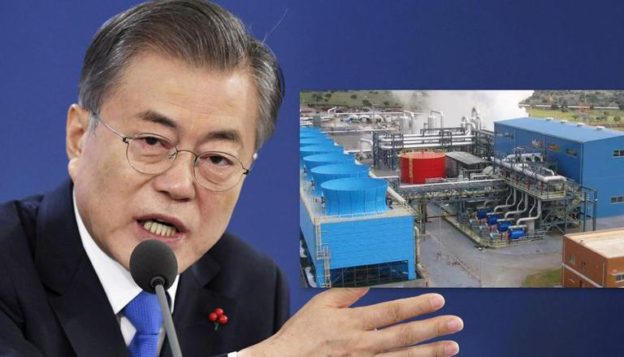South Korea is all set to support the commercialization of hydrogen and ammonia co-firing power generation to replace coal and liquefied LNG power generation.
In order to replace coal and liquefied natural gas (LNG) power generation, the South Korean government is all set to support the commercialization of hydrogen and ammonia co-firing power generation. The government intends to drastically cut greenhouse gas emissions by commercialising ammonia co-firing power plants by 2030 (20%) and hydrogen by 2025 (over 30%). At a meeting on Tuesday, November 16, the Ministry of Trade, Industry, and Energy (MOTIE) announced the formation of the ‘Hydrogen-Ammonia Power Generation Demonstration Promotion Team,’ which will be led by the Director-General for Energy Innovation Policy, reported news agency ANI citing Global Economic.
Alongside the MOTIE and state-run power corporations, private enterprises will also engage in all activities, from producing hydrogen and ammonia to securing and transporting the promotion team. Various topics were covered at the meeting, including the government’s ‘Updated 2030 NDC (Nationally Determined Contribution)’ released last month. Besides, the current status and promotion plans of hydrogen and ammonia power generating technologies featured in the ‘2050 Carbon Neutrality Roadmaps’ were also discussed. The hydrogen-ammonia co-firing power generation is the latest technology that generates electricity by burning carbon-free hydrogen (H2) and ammonia (NH3) in current coal and LNG generators in a stable manner.
As government includes carbon-free gas turbine power generation in Carbon Neutrality Roadmaps, it can lower greenhouse gas emissions by using existing infrastructure, such as power plants and transmission lines. Ammonia may substitute coal in proportion and hydrogen can replace LNG, greenhouse gas emissions will be reduced. In the Updated 2030 NDC objective, Korea increased the ammonia power contribution to 3.6% of overall power generation by 2030. In the Carbon Neutrality Roadmaps, the government also included carbon-free gas turbine power generation such as hydrogen and ammonia as 13.8%-21.5% of total power generation by 2050.
In 2022, the Ministry of Industry, Trade, and Energy will build an ammonia storage facility to implement ammonia co-firing power generation to coal power generation. It will also assist improvements in laws and systems governing hydrogen-ammonia power generation, including incentives provided through the eco-friendly certification system. It also intends to spearhead the creation of an international supply chain to improve energy security by ensuring a consistent supply of hydrogen and ammonia.
https://www.republicworld.com/world-news/rest-of-the-world-news/south-korea-plans-to-promote-hydrogen-ammonia-power-plant-replacing-coal-and-lng.html





